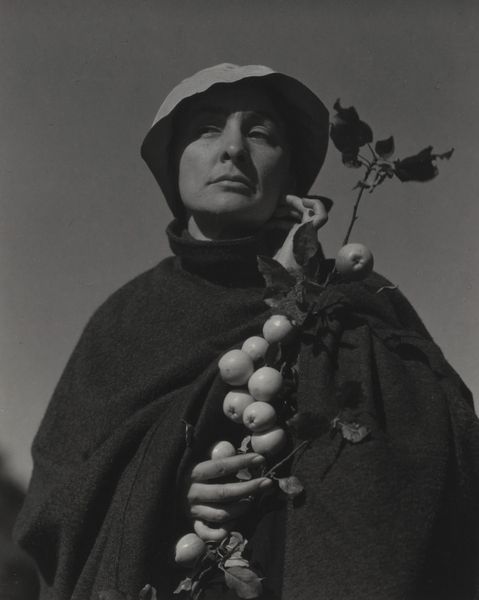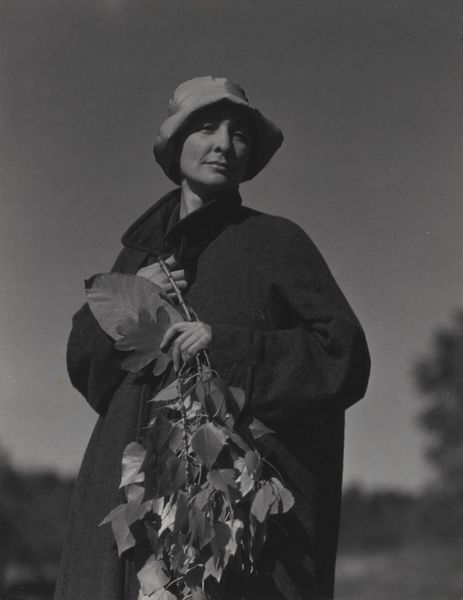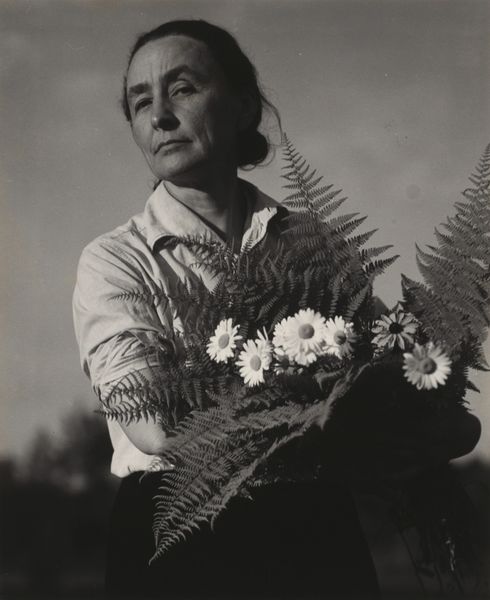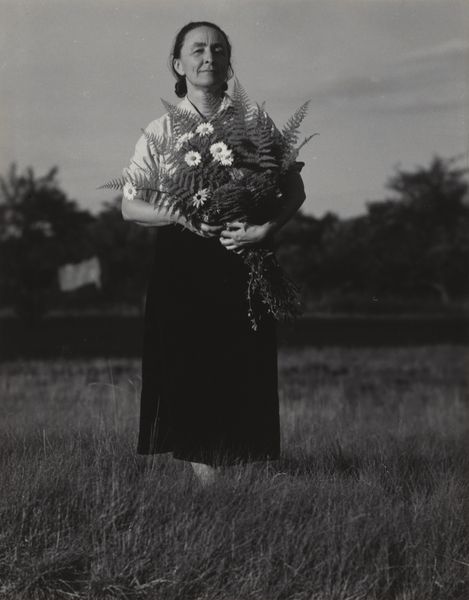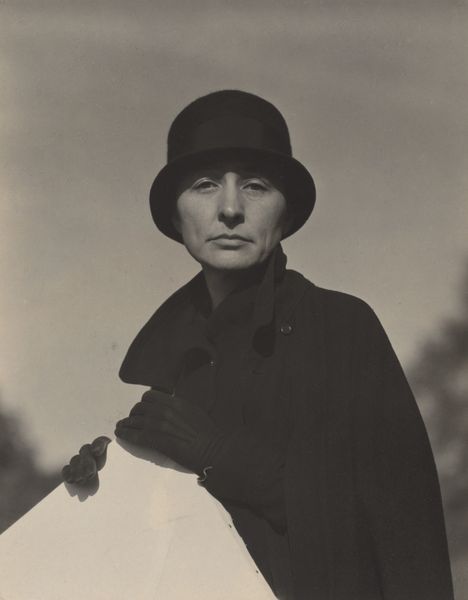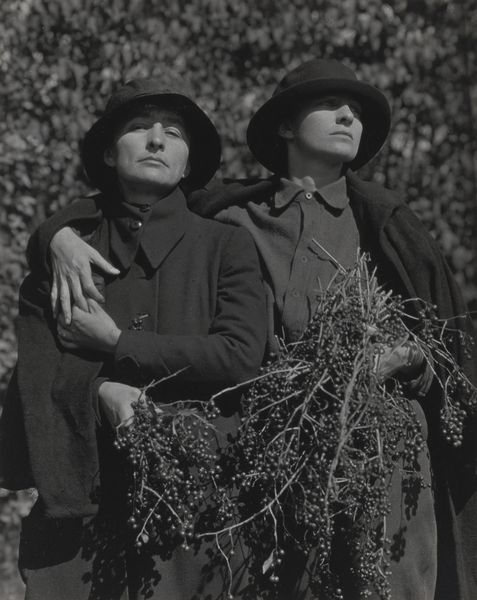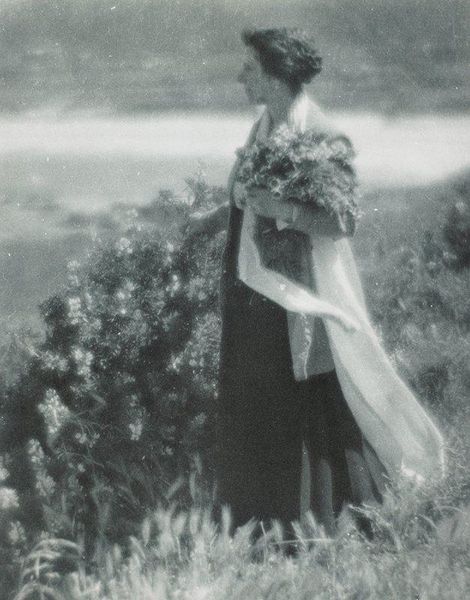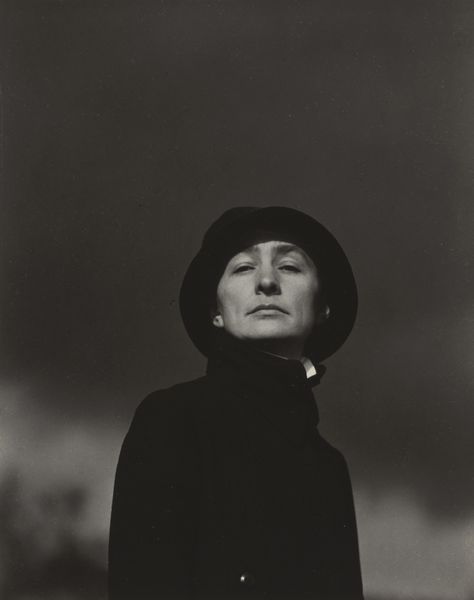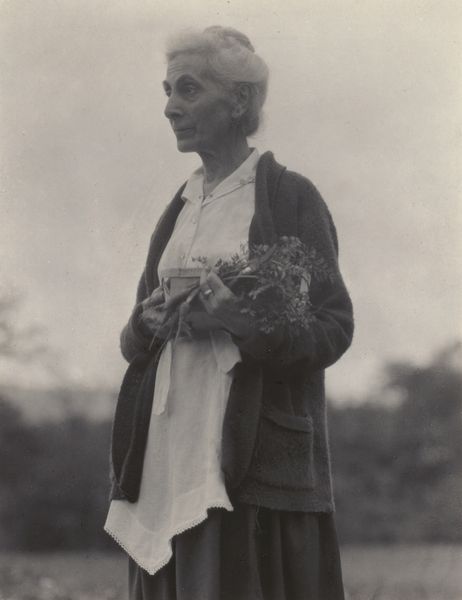
photography, gelatin-silver-print
#
portrait
#
self-portrait
#
black and white photography
#
pictorialism
#
photography
#
black and white
#
gelatin-silver-print
#
monochrome photography
#
monochrome
#
monochrome
Dimensions: sheet (trimmed to image): 11.2 x 9.2 cm (4 7/16 x 3 5/8 in.) mount: 34.2 x 27.5 cm (13 7/16 x 10 13/16 in.)
Copyright: National Gallery of Art: CC0 1.0
Editor: This is "Georgia O'Keeffe," a gelatin-silver print photograph taken by Alfred Stieglitz in 1924. It's striking, almost austere, in its stark black and white simplicity. O’Keeffe holds a branch laden with what appear to be small fruit. How do you interpret this work, especially given the relationship between Stieglitz and O'Keeffe? Curator: It's impossible to separate this image from the complex personal and artistic relationship between Stieglitz and O'Keeffe. He was instrumental in shaping her public image. These portraits, and there are many, need to be considered within the context of his gallery, his championing of modernism, and his own artistic ego. Look at the way he frames her: Do you see how the image both celebrates and, potentially, objectifies her? Editor: I hadn’t thought about it that way. It seems like a very loving portrait, showing her strength, but I can also see how the gaze might not be entirely hers. Curator: Exactly. The Stieglitz circle promoted certain ideas about female artists – their supposed emotionality, their connection to nature. This portrait plays into those ideas. The branch she holds—is it a symbol of fertility, or a more complex statement about her artistic agency? Think about the art world's expectations and how O'Keeffe navigated those constraints to achieve success. Editor: It’s so much more layered than I initially thought. I will look more critically at photographs that might at first seem so revealing or vulnerable. Curator: Yes. It is an interesting piece for discussion on gender, representation and the artistic politics of the early 20th Century.
Comments
No comments
Be the first to comment and join the conversation on the ultimate creative platform.
